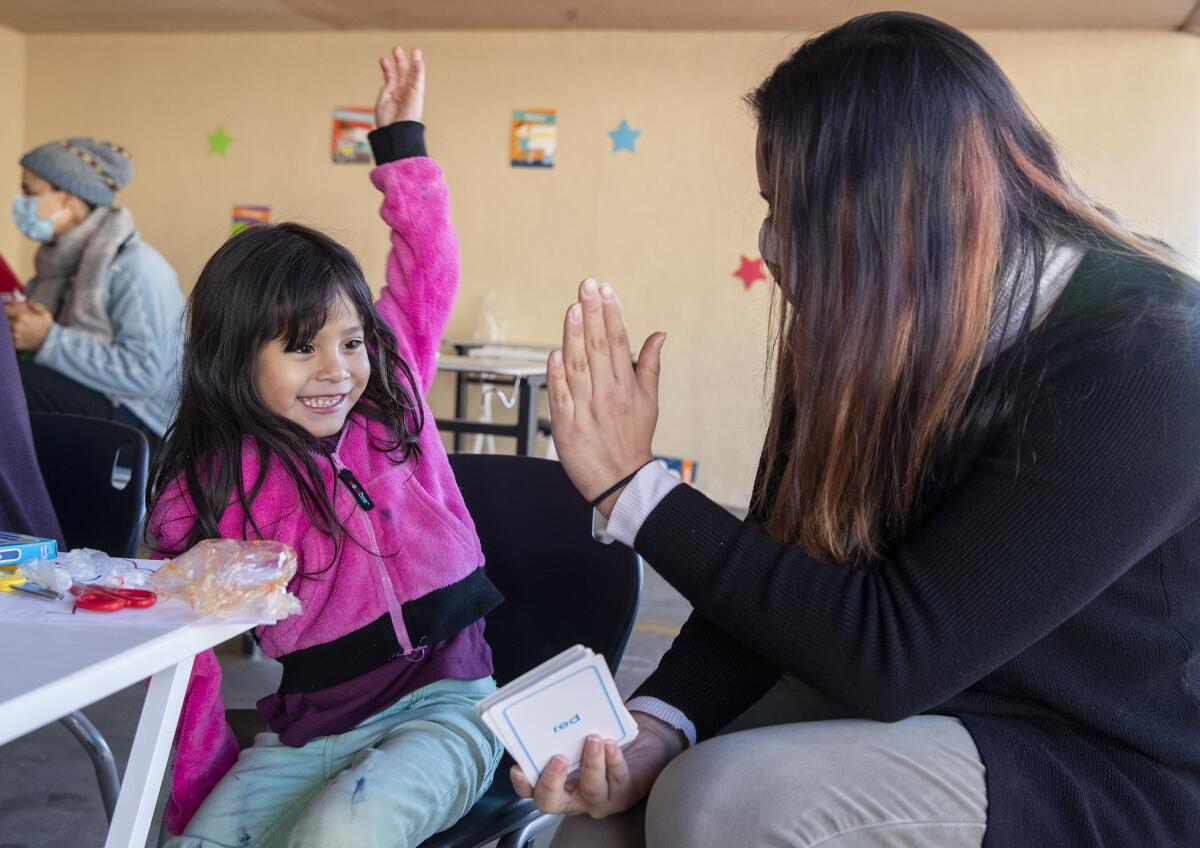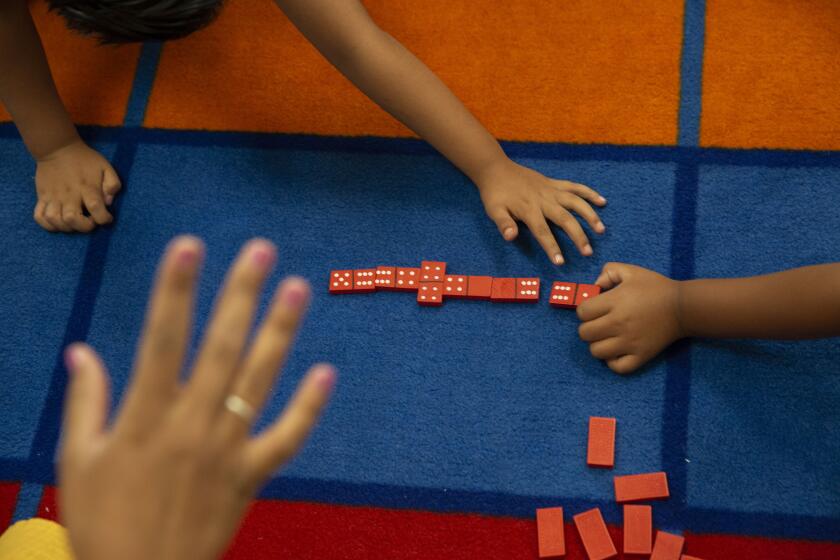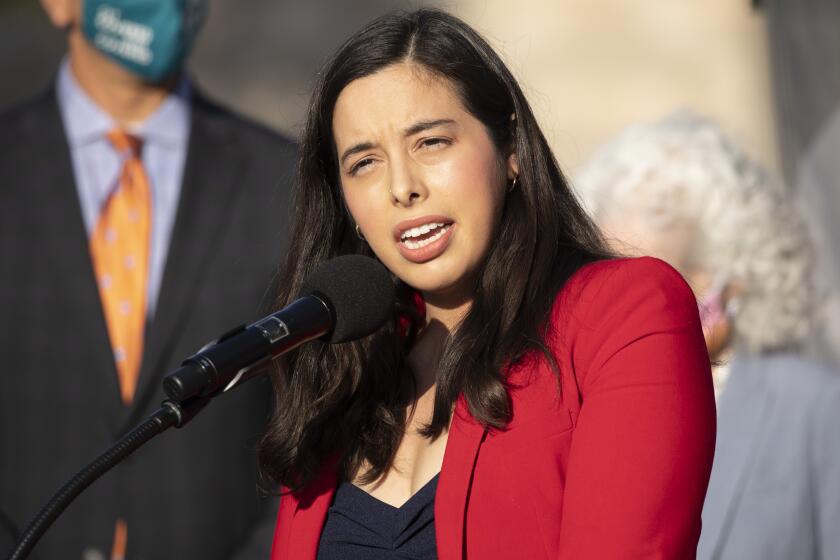Editorial: How to fix the rocky start of transitional kindergarten for all California 4-year-olds

- Share via
California has had limited transitional kindergarten — a more formal, academic form of preschool for 4-year-olds — since 2010, offering it primarily to the children who were closest to kindergarten age but not quite old enough to enroll. There were financial incentives for school districts to climb aboard. Some embraced the idea right away; L.A. Unified is a notable example. Others showed little interest.
And now its time has come on a much broader scale as California gears up to offer it to all 4-year-olds — though to make a success of this, the state must overcome some of the hurdles that it set up for itself.
Studies conducted from 2015 to 2017 by the nonpartisan American Institutes for Research found that the state’s program produced significant gains in literacy and math for kindergartners who had attended TK, as it’s called, compared with those who hadn’t. That was especially true for children who were not yet fluent in English as well as those from low-income households, who had higher gains overall. The disappointment: A year of transitional kindergarten did not improve social and emotional learning, and for many students, some of the academic gains faded by the end of kindergarten.
Yet last year, with the state awash in federal rescue dollars, Gov. Gavin Newsom proposed making TK universal. Written into the budget bill, the state now requires school districts to offer the program and begin expanding it to more students starting this August, with further expansion for the next two years. And at a time when declining enrollment threatens the budgets of many school districts, TK would bring more students into the public school system and keep teachers employed.
At the time of Newsom’s proposal, we praised the general concept but raised several concerns, urging the governor to move cautiously. Among the issues were whether the state had enough teachers. It needs about 2,400 additional credentialed teachers for this first expansion; in a couple of years, it will need an additional 11,000, plus more than twice as many classroom aides.
Providing transitional kindergarten for all 4-year-old children could cost $2.7 billion a year at full implementation.
The prekindergarten spending also was supposed to help the underpaid teachers of existing private preschools by making jobs in the transitional classes available to them. Many are women of color making lower wages and benefits than public school teachers. Transitional kindergarten requires a multiple-subject teaching credential; about half the teachers in private preschool have bachelor’s degrees and most of those are in early childhood education, which doesn’t meet the requirement but probably is more important for leading a classroom of 4-year-olds. These teachers need help with their education to meet the requirements, which should be more flexible so that shorter training could give them the necessary credentials, lift up a long poorly paid group of teachers and provide greater equity among educators.
Both of these concerns — and others that we did not foresee — have turned into actual problems now that the deadline is drawing close. Public school enrollment is declining but not yet to the point that teachers can be spared for prekindergarten classes, and in some districts, enrollment isn’t dropping at all. Districts are complaining that they cannot find the teachers for these new classes.
Beyond that, although the budget bill was signed in July, the state Department of Education did not provide schools with the guidelines for implementing the law until mid-February, giving them little time to have classrooms set up and operating properly by August, said Bruce Fuller, professor of education at UC Berkeley and head of the Children’s Forum, which conducts research on education topics in the state.
L.A. Unified and many other large, urban districts have been ahead of the game in expanding transitional kindergarten, he said, because they embraced it from the start and have considerable expertise in early childhood education within their administrative offices. Small and medium-sized districts are far more likely to be unprepared to place more 4-year-olds in classrooms in a little more than three months.
In addition, Fuller said that although the administration has been distributing money for school districts to create adequate classrooms for transitional kindergarten, there hasn’t been enough time for schools to get the renovation work done.
The state also made no provision to pay for the new program in more than 150 “basic aid” school districts. Transitional kindergarten will be paid on a per-student basis; basic aid districts are funded by local property taxes rather than based on enrollment, and the budget bill did nothing to bridge that gap. Some basic aid districts are in wealthy areas but not all of them, and many are saying they cannot afford transitional kindergarten without cutting back on other crucial programs. Some say they won’t offer the classes until the state provides the money.
The toughest decision for school district voters: Two strong candidates are vying for the seat of termed-out member Monica Garcia.
To its credit, the Newsom administration has provided money to the state’s teacher programs to focus on graduating more teachers to lead TK classes. But it should have been obvious from the start that it would take more than a year to see the results of that investment as well as the money to renovate and build classrooms for 4-year-olds. Likewise, perhaps the state Department of Education was slower than it should have been at providing guidance, but better to take time to do it right than rush the job and create confusion and error.
The intentions were good, but the implementation problematic. The state can go a long way toward fixing this by granting districts a delay when they are not yet ready. It also should provide a fast-track credentialing program that prepares private preschool teachers with bachelor’s degrees for teaching in these new classes. The state Department of Education should provide small and medium-sized districts with experts in early childhood education to help set up their programs.
The state was wrong to impose a new mandate on basic aid districts without funding it; that problem has to be corrected immediately.
More to Read
A cure for the common opinion
Get thought-provoking perspectives with our weekly newsletter.
You may occasionally receive promotional content from the Los Angeles Times.












